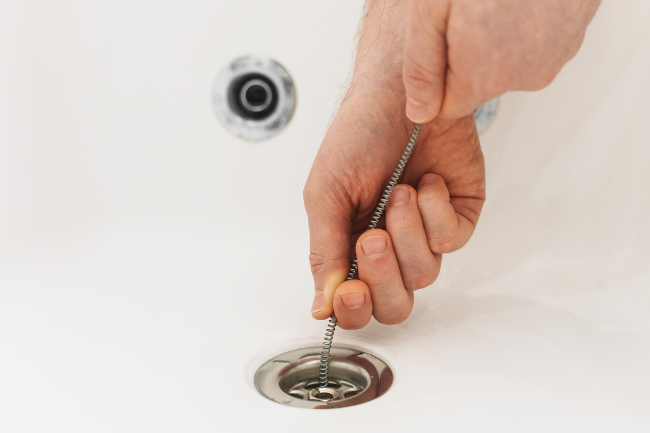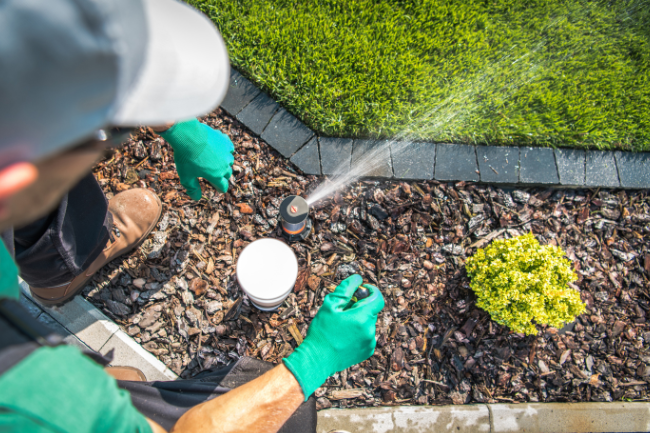How to Get a Ring Out of the Sink [5 Steps]
Posted by William Heinselman on

Losing a ring down the sink can feel like a homeowner's nightmare—but don’t worry, it’s often easier to retrieve than you might think. If you find yourself staring at the drain in panic, take a deep breath.
Whether it’s an engagement ring, a family heirloom, or a favorite piece of jewelry, we’ll guide you step by step to safely retrieve it without calling a plumber. With the right tools and a little patience, you’ll have your ring back in no time.
Assess the Situation: Understanding Your Sink's Plumbing
Before you start trying to retrieve the ring, it's important to understand the basic layout of your sink's plumbing. Most sinks are equipped with a P-trap, a curved section of pipe located below the sink. The P-trap is designed to trap debris and prevent it from clogging the main plumbing system.
Knowing where the P-trap is and how it functions will give you a better idea of where your ring might be and how to access it. If your sink has a garbage disposal, you'll need to take extra care to turn it off and avoid any sharp blades.
Basic Tools You Need for Ring Retrieval
Having the right tools on hand can make the process of retrieving your ring much easier. Here are some basic tools you might need:
- Adjustable wrench or pliers: Useful for loosening the nuts on the P-trap.
- Bucket or bowl: To catch any water or debris that might spill out when you disassemble the P-trap.
- Flashlight: Helps you see inside the pipes.
- Gloves: To protect your hands from any sharp edges or debris.
- Towel or rag: To clean up any spills.
Step-by-Step Guide to Disassembling the P-Trap

1. Turn off the water supply
Begin by locating the water shut-off valve, which is typically found under the sink or near the main water line. Turn the valve clockwise to ensure the water supply to the sink is completely turned off. This crucial step prevents any accidental flooding or water damage while you work on retrieving your ring. Double-check that the water is off by turning on the faucet and confirming that no water flows out.
2. Place a bucket under the P-trap
Position a sturdy bucket or a large bowl directly beneath the P-trap, which is the curved section of pipe under your sink. This container will catch any water or debris that may spill out when you begin to disassemble the P-trap. Having a bucket in place will help keep your workspace clean and prevent any mess from spreading across your floor.
3. Loosen the slip nuts
Using an adjustable wrench or a pair of pliers, carefully grip the slip nuts located on either side of the P-trap. These nuts secure the P-trap to the rest of the plumbing system. Gently turn the nuts counterclockwise to loosen them. Take care not to apply too much force, as this could damage the nuts or the pipes themselves. If the nuts are particularly tight, apply a bit of penetrating oil to help ease them loose.
4. Remove the P-trap
With the slip nuts sufficiently loosened, cautiously detach the P-trap from the plumbing. Slowly lower it into the bucket to avoid spilling any remaining water or debris. Once removed, inspect the inside of the P-trap for your lost ring. Gently shake the trap over the bucket to dislodge any debris that might be hiding your ring. Be thorough in your search, as small items can easily be overlooked.
5. Reassemble the P-trap
After successfully retrieving your ring, it's time to put everything back together. Carefully align the P-trap with the pipes and hand-tighten the slip nuts to secure it in place. Use your wrench or pliers to give the nuts an additional turn, ensuring they are snug but not overly tight. Once reassembled, check that all connections are secure and there are no leaks. Finally, turn the water supply back on by rotating the shut-off valve counterclockwise, and test the faucet to confirm everything is functioning properly.
Alternative Methods: Using a Magnet or Vacuum
If disassembling the P-trap seems too daunting or if you're not comfortable handling plumbing tools, don't worry—there are alternative methods you can try to retrieve your ring without taking apart any pipes:
- Magnet: If your ring is made of a magnetic material, such as certain types of steel or iron, you can use a strong magnet to help you fish it out of the drain. Attach the magnet to a flexible rod or a sturdy string, which will allow you to maneuver it through the twists and turns of the plumbing. Carefully lower the magnet into the drain, gently moving it around to ensure it comes into contact with the ring. Be patient and methodical, as it may take a few attempts to successfully latch onto the ring and pull it back up to safety.
- Vacuum: Another effective method is using a wet/dry vacuum, which can create enough suction to pull the ring out of the drain. To maximize the vacuum's efficiency, first ensure that the vacuum is set to the wet mode if your model has this option. Then, create a tight seal around the vacuum hose by wrapping a damp rag around it, which will help concentrate the suction power. Carefully position the hose over the drain opening and turn on the vacuum. The strong suction should be able to lift the ring out of the drain and into the vacuum's collection chamber. Be sure to check the chamber thoroughly to retrieve your ring once it's been sucked up.
Prevent Future Mishaps: Installing a Sink Strainer
To avoid losing items down the sink in the future, consider installing a sink strainer. Sink strainers are inexpensive and easy to install, and they can catch small items like rings before they go down the drain.
Simply place the strainer over the drain and remove it periodically to clean out any debris. This simple addition can save you from the headache of retrieving lost items in the future.
Need Emergency Plumbing Help? Call Express!
If you're unable to retrieve your ring or encounter any issues with your sink's plumbing, don't hesitate to call a professional. At Express Sewer and Drain, our team of experienced plumbers is ready to assist you with any plumbing emergencies.
We offer fast, reliable service to get your plumbing back in working order. Contact us today for all your plumbing needs!
Topics: Home Plumbing, DIY, Plumbing Tips







